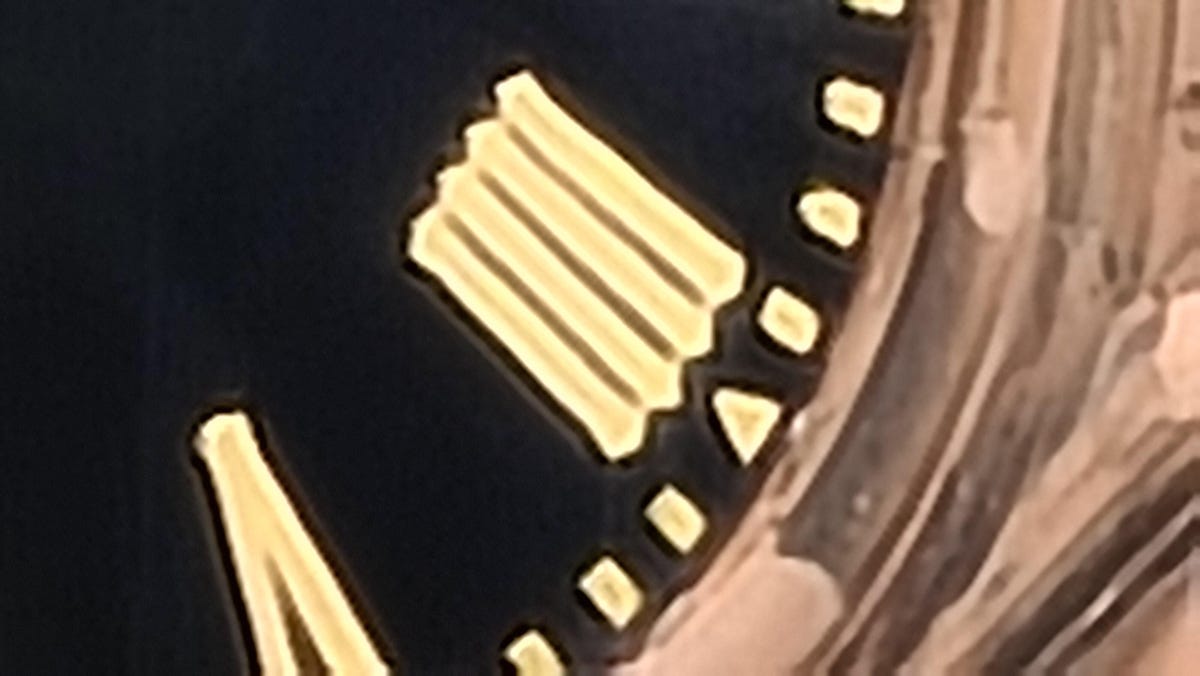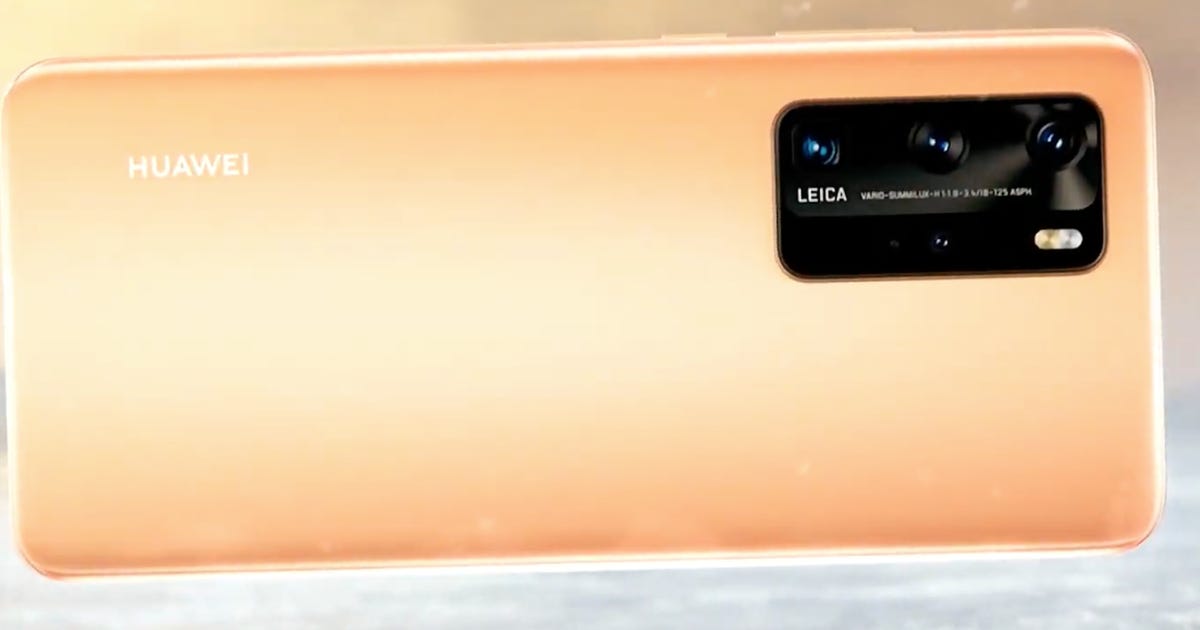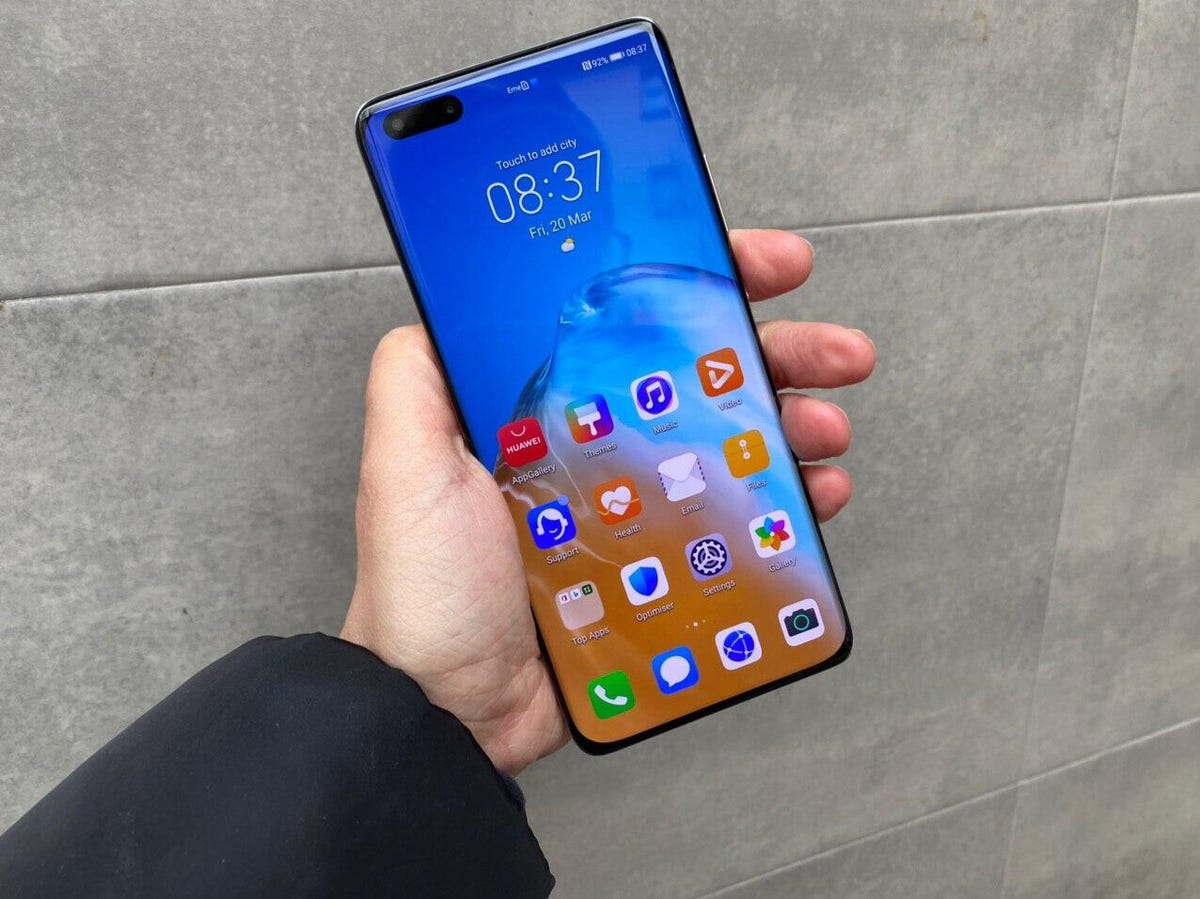
Huawei P40 Pro Plus' 10x optical zoom camera puts iPhone and Samsung to shame
Huawei's P40 Pro Plus is the phone I was waiting for. The company announced the P40 range -- which also includes the base P40 and P40 Pro -- in March and while the P40 Pro proved it can take decent images, it was the Pro Plus that really pushes boundaries with its imagery.
It's the first phone to come with a 10x optical zoom lens, which lets you get much closer to your subject with little loss in quality. It puts the iPhone 11 Pro's 2x optical zoom to shame. Even the Samsung S20 Ultra's 4x optical zoom can't compete.
It actually has five cameras: a standard 50-megapixel lens, a 40-megapixel ultrawide-angle camera, an 8-megapixel 3x optical zoom, an 8-megapixel 10x optical zoom and a time-of-flight depth-sensing camera.
As a professional photographer, I was extremely keen to get my hands on this phone and take its cameras for a spin.

First up, these neat flowering boots found here in Edinburgh, Scotland. The phone's standard 50-megapixel camera has captured this scene with loads of details, a perfect exposure and spot-on colors.

The iPhone 11 Pro's version of the shot is also perfectly exposed with plenty of detail. The white balance is slightly different in each shot -- the P40 leans more on the magenta tones -- but not so much that either one looks wrong.

On Edinburgh's Calton Hill, the P40 Pro Plus has done a great job of exposing for both the bright sky and the more shadowy areas of the buildings. There is again a slight magenta shift in the white balance, but otherwise it's a cracking shot.

The white balance and colors look spot on in this image, and the overall exposure is again superb.

The same scene on the Galaxy S20 Ultra. The color saturation and contrast have both been lifted a touch, as is usually the case with images taken on a Samsung phone. Otherwise, there's little to separate them.

At 3x optical zoom, the P40 Pro Plus has still captured plenty of detail and managed to maintain its overall exposure.

By comparison, the S20 Ultra's 4x zoom has got a little closer, but the lifted shadow detail on the tree has resulted in this image looking somewhat fake.

Huawei P40 Pro Plus, at 10x zoom.
Andrew Hoyle/CNET
Samsung Galaxy S20 Ultra, at 10x zoom.
Andrew Hoyle/CNETWith both phones shooting at 10x optical zoom, it's clear that in this example, the P40 Pro Plus has underexposed the scene, causing the church to fall too much into shadow. The S20 Ultra's shot still looks a bit fake, but at least the church is clearly visible.

Huawei P40 Pro Plus, at 100x zoom.
Andrew Hoyle/CNET
Samsung Galaxy S20 Ultra, at 100x zoom.
Andrew Hoyle/CNETBoth phones can push their zoom limits all the way to 100x, and both are quite frankly terrible.

Huawei P40 Pro Plus, at 100x zoom.
Andrew Hoyle/CNET
Samsung Galaxy S20 Ultra, at 100x zoom.
Andrew Hoyle/CNETAnd the same is true here. Mushy details and an image that's completely unusable, beyond perhaps some kind of bragging rights, but I doubt even that would get you far. Sure, you could maybe try and zoom in on a celebrity you spotted in the distance, but their face would be so indistinguishable that you wouldn't be able to prove you saw them, no matter how much you boasted. Both these phones take great shots at 10x zoom, but it's not worth pushing it beyond that.

The 10x zoom on the Huawei is great to play with though. I loved being able to snag this picture of what I'm pretty sure is a great tit. Wildlife photography has never been the realm of phones, due to their inability to get close up on the creatures you're photographing, but the P40 Pro Plus would certainly let you get some cracking shots of the wildlife that visits your garden.

I also got close up on this plane descending to land. It's pretty dark, so I'm a little disappointed the phone hasn't brightened the subject up a bit.

Huawei P40 Pro Plus, using super wide-angle lens.
Andrew Hoyle/CNET
iPhone 11 Pro, using super wide-angle lens.
Andrew Hoyle/CNETSwitching to the wide-angle camera, the Huawei P40 Pro Plus doesn't provide as wide a view as the iPhone 11 Pro and while the image is sharp, the iPhone's shot is more vibrant.

Huawei P40 Pro Plus at 3x zoom.
Andrew Hoyle/CNET
iPhone 11 Pro at 2x zoom.
Andrew Hoyle/CNETBut it's the zoom skills that push the P40 Pro plus ahead. The iPhone 11 Pro's 2x maximum optical zoom doesn't really bring the statue into focus, while even at 3x on the P40 Pro Plus, it's becoming clearer that there's a figure in the water.

Huawei P40 Pro Plus at 10x zoom.
Andrew Hoyle/CNETAt 10x zoom, the statue fills the frame, with great exposure and colors too. The iPhone 11 Pro is simply no competition to the P40 Pro Plus when it comes to zoom.

Back in the super wide-angle mode, the P40 Pro Plus and the iPhone 11 Pro seem to be pretty much neck and neck. In this example, I prefer the iPhone 11 Pro's shot; the sky is richer, with more noticeable cloud detail and the wider view it offers has really helped emphasize the mushrooms in the foreground.

But the P40 Pro Plus takes the wide-angle win here as it's been able to keep that bright sky under control, resulting in a much better looking image overall. The iPhone has completely overexposed that sky.

Huawei P40 Pro Plus in low light.
Andrew Hoyle/CNET
iPhone 11 Pro in low light.
Andrew Hoyle/CNET
Galaxy S20 Ultra in low light.
Andrew Hoyle/CNETIn this low-light scene, using night mode on each phone, there's not much to choose between them. The iPhone 11 Pro's shot is the brightest of the three, but the Galaxy S20 Ultra's image is slightly sharper. That said, all three have done a great job of producing clear images in what was an extremely dark room.
So far I'm very impressed with what the P40 Pro Plus can do. Shots from all its lenses look great and are up there with the best of today's super phones. The zoom really does put it in a league of its own and I'm keen to spend more time seeing what it can really do. I also want to test more of the video functions -- including night mode for video -- as well as the 32-megapixel front-facing camera. Stay tuned for more on the camera.

What's the P40 Pro Plus like as a phone?
Beyond the great camera, the phone is packed with tons of top tech. The 6.5-inch display stretches right to the edges of the phone for razor-thin bezels, the Kirin 990 processor is a powerhouse and it supports 5G. It's got IP68 waterproofing too, as well as wireless charging, 8GB of RAM and a battery that'll comfortably last a whole day. It's basically got everything you'd expect from a top-end phone in 2020.
What it doesn't have are Google services, however, due to the ongoing restrictions on Huawei imposed by the US government. That means no Chrome, no Gmail and no Google Play Store for your apps. Huawei does have its own app store with some big names such as Zoom, VLC, Snapchat and TikTok. Various other apps -- including Facebook and WhatsApp -- can be downloaded as apk files from their official websites. Still, those of you who rely on Google's apps would be best shopping elsewhere.
Should I buy it?
The lack of Google services on the phone is certainly a big issue to be aware of and will be a deal-breaker for many. However, unlike with the P40 Pro I've already looked at, the P40 Pro Plus's camera is so impressive that it makes the phone a contender for your attention.

But it needs to be cheaper. At 1,399 euros (which converts to £1,250, AU$2,280 or $1,580, although it won't be on sale in the US), it's not an affordable phone. That's a problem, as its nearest rival, the Galaxy S20 Ultra -- which has similar zoom skills, 5G and Google services -- costs less ($1,400, £1,199 and AU$1,999).
There's no question Huawei's phone has got a lot going for it. The zoom would really appeal to those of you hoping to enjoy some garden wildlife photography. But if you're not in a hurry, it's worth waiting a little while after the phone's mid-June sale date to see if that price dips below the S20 Ultra. At the current prices, the Galaxy S20 Ultra is where my money would go.
Source




